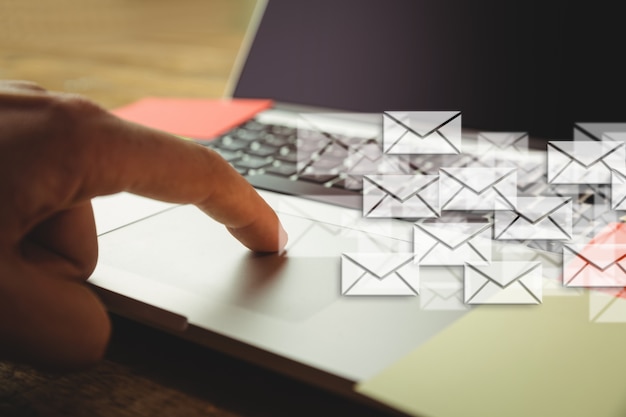Mastering Email Security: A Comprehensive Guide On How To Create Your DMARC Record
In an era where cyber threats loom large, securing our digital communication channels has never been more crucial. Email, being a fundamental tool for communication, is a prime target for cybercriminals. To fortify this vital aspect of our online presence, mastering email security is imperative. In this comprehensive guide, we delve into the intricacies of DMARC (Domain-based Message Authentication, Reporting, and Conformance), unraveling its significance and providing step-by-step instructions on creating your DMARC record. Explore this link on how to create DMARC record.
The Growing Threat Landscape
In an interconnected world, email serves as the backbone of communication for businesses, individuals, and organizations. However, this very convenience makes email a lucrative target for cybercriminals. Phishing attacks, spoofed emails, and domain impersonation are on the rise, posing significant threats to data security and privacy.
To combat these challenges, email authentication protocols play a pivotal role. DMARC emerges as a robust solution, offering a comprehensive approach to email security. This guide aims to demystify DMARC, explaining its core principles and guiding you through the process of creating your DMARC record.
Understanding DMARC: A Shield Against Email Spoofing
DMARC, an email authentication, policy, and reporting protocol, builds upon two existing protocols – SPF (Sender Policy Framework) and DKIM (DomainKeys Identified Mail). SPF helps to validate the sender's IP address, while DKIM ensures the integrity of the email content. DMARC integrates these mechanisms, adding an extra layer of protection against domain-based phishing attacks.

In essence, DMARC allows domain owners to specify how their emails should be handled if they fail SPF and DKIM checks. It empowers organizations to control their email security policies, reducing the risk of malicious activities and ensuring genuine communication.
Benefits of Implementing DMARC
- Reduced Phishing Attacks: By authenticating legitimate senders and blocking malicious ones, DMARC significantly diminishes the chances of falling victim to phishing attacks.
- Enhanced Email Deliverability: Organizations that implement DMARC records often experience improved email deliverability, as email service providers prioritize authenticated emails.
- Brand Protection: DMARC aids in protecting your brand reputation by preventing cybercriminals from using your domain for fraudulent activities.
- Detailed Reporting: The reporting feature of DMARC provides valuable insights into email activity, allowing organizations to analyze and fine-tune their email security strategies.
Step-by-Step Guide to Creating Your DMARC Record
Step 1: Assess Your Current Email Infrastructure
Before diving into the creation of a DMARC record, it's crucial to evaluate your existing email infrastructure. Identify all authorized email senders and gather information on your current SPF and DKIM configurations.
Step 2: Create a DMARC Policy
Define your DMARC policy by specifying how your emails should be handled in case of SPF and DKIM failures. Policies can range from "none" (monitor only), "quarantine" (mark as spam), to "reject" (do not deliver). Choose a policy that aligns with your organization's security requirements.
Step 3: Publish Your DMARC Record
Update your DNS (Domain Name System) records with the DMARC TXT record. This involves specifying your DMARC policy, domain, and providing an email address to receive aggregate and forensic reports. The DMARC record should be published in the form of a TXT record within your DNS settings.
Step 4: Monitor and Analyze Reports
Regularly monitor the reports generated by DMARC to gain insights into your email ecosystem. Analyze these reports to identify any unauthorized or suspicious activity, and adjust your DMARC policy accordingly.

Step 5: Gradual Enforcement
Consider implementing DMARC gradually, starting with a "none" policy to monitor and analyze the impact on your email traffic. Once you are confident in the accuracy of your DMARC setup, you can escalate to a "quarantine" or "reject" policy.
Challenges and Best Practices
While DMARC is a powerful tool, its successful implementation comes with its set of challenges. Understanding these challenges and adopting best practices is crucial for a robust email security strategy.
- Phasing In DMARC Policies: Implementing a "reject" policy immediately may lead to legitimate emails being rejected. Gradually phasing in DMARC policies allows organizations to identify and address issues without disrupting their email communication.
- Collaborating with Third-Party Senders: Organizations often collaborate with third-party vendors or services for email communication. Ensuring these entities align with your DMARC policies is essential. Establish clear communication and cooperation to prevent disruptions in email delivery.
- Best Practice- Regularly Review and Update Policies: The email landscape is dynamic, and so are cyber threats. Regularly reviewing and updating DMARC policies ensures that your organization stays ahead of emerging threats and adapts to changes in your email infrastructure.
Case Studies: Real-World Examples of DMARC Success
Explore real-world case studies where organizations successfully implemented DMARC to bolster their email security. From multinational corporations to small businesses, these examples showcase the versatility and effectiveness of DMARC in different scenarios.
Securing the Future of Email Communication
As cyber threats continue to evolve, mastering email security becomes a non-negotiable priority. DMARC stands out as a beacon of hope in the fight against phishing, spoofing, and domain impersonation. By following this comprehensive guide, organizations and individuals can fortify their email defenses, ensuring a secure and trustworthy communication environment.
In the ever-expanding digital landscape, the mastery of email security through DMARC is not just a best practice; it is a necessity for a resilient and secure future. Let this guide be your companion in navigating the complexities of DMARC and safeguarding the integrity of your email communication.
Common Misconceptions About DMARC
Addressing misunderstandings is crucial for the effective implementation of DMARC. This section will debunk common myths surrounding DMARC and email security.
Measuring DMARC Effectiveness
Implementing DMARC is not a one-time task; it requires ongoing evaluation. We'll delve into the metrics used to assess the effectiveness of DMARC and strategies for continuous improvement.
Integration with Other Security Measures
DMARC doesn't operate in isolation. Understanding how it complements existing security protocols helps in building a comprehensive security framework that safeguards all aspects of your digital communication.

